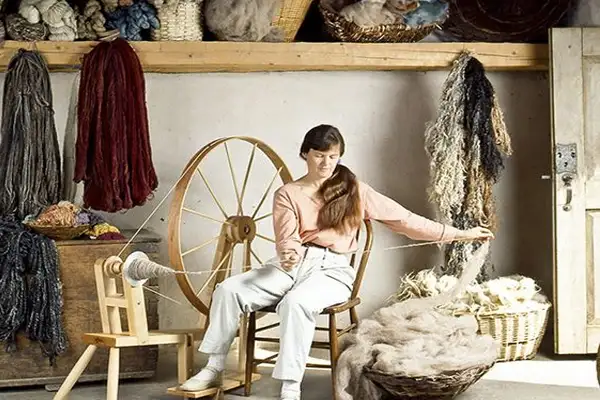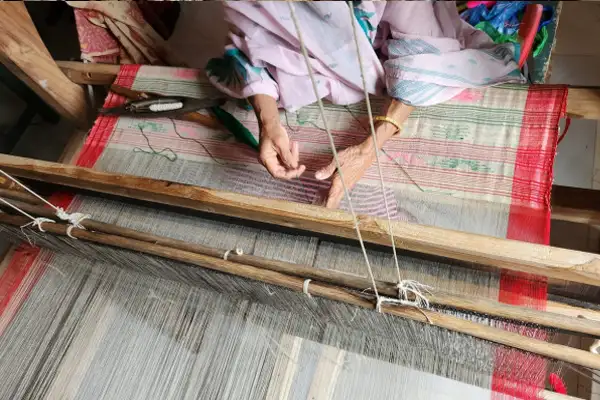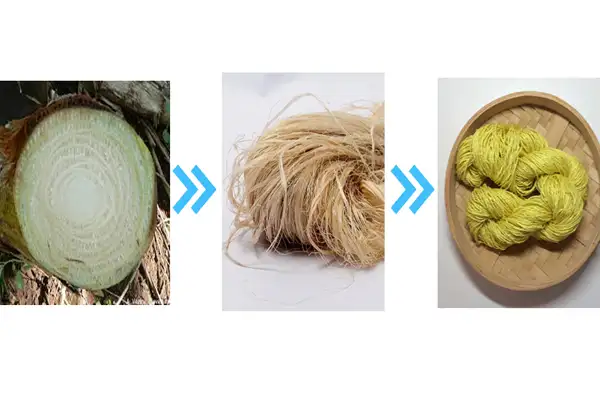The processing of banana fiber into yarn for textile production involves several key steps that transform the raw material into a versatile and sustainable product. Here’s a detailed overview of the process based on the information gathered:
1. Harvesting
The process begins with the harvesting of mature banana plants. The outer layers of the pseudostem, which contain the strongest fibers, are extracted. This step is crucial as it ensures that the fibers used for spinning are of high quality.
2. Extraction
After harvesting, the extraction of fibers takes place. This involves several sub-steps:
-
- Decortication: The outer layers of the pseudostem are removed to expose the fibrous inner core. This can be done manually or using mechanical methods.
-
- Separation: The fibers are separated from the non-fibrous material through a process called decortication, where the stalks are crushed and scraped.
3. Cleaning and Soaking
Once extracted, the fibers undergo cleaning to remove impurities such as dirt and sap. This is followed by a soaking process, where the fibers are treated to soften them, making them easier to work with. Soaking can involve water or other natural treatments that help enhance fiber quality.
4. Drying
After cleaning and soaking, the fibers are dried in sunlight or through mechanical means. This step is essential to reduce moisture content, which makes the fibers more manageable for subsequent processing.
5. Sorting
Once dried, the fibers are sorted into groups based on their quality and length. Longer fibers are typically used for finer fabrics, while shorter fibers may be utilized for coarser textiles or other applications.
6. Spinning
The sorted fibers are then ready for spinning into yarn:
-
- The fibers can be spun by hand or using spinning machinery.
-
- This step involves twisting together the individual fibers to form a durable and long-lasting yarn.
-
- Depending on the desired end product, different spinning techniques may be employed to achieve specific textures and strengths.

7. Weaving or Knitting
After spinning, the banana fiber yarn can be woven or knitted into fabrics using traditional looms or modern machinery. The resulting textiles can vary widely in texture and appearance, suitable for various applications such as clothing, home textiles, and accessories.

8. Finishing
The final step involves finishing processes that enhance the fabric’s appearance and properties:
-
- This may include dyeing, bleaching, or applying surface treatments to improve durability and aesthetic appeal.
-
- Additional processing steps may be tailored based on specific requirements for applications like papermaking or composite materials production.
Conclusion
The processing of banana fiber into yarn combines traditional techniques with modern technology to create a sustainable textile material. With its strength, durability, and eco-friendly characteristics, banana fiber yarn is increasingly recognized as a valuable alternative in the textile industry. As demand for sustainable materials grows, understanding this processing method highlights banana fiber’s potential in contributing to environmentally responsible textile production.

